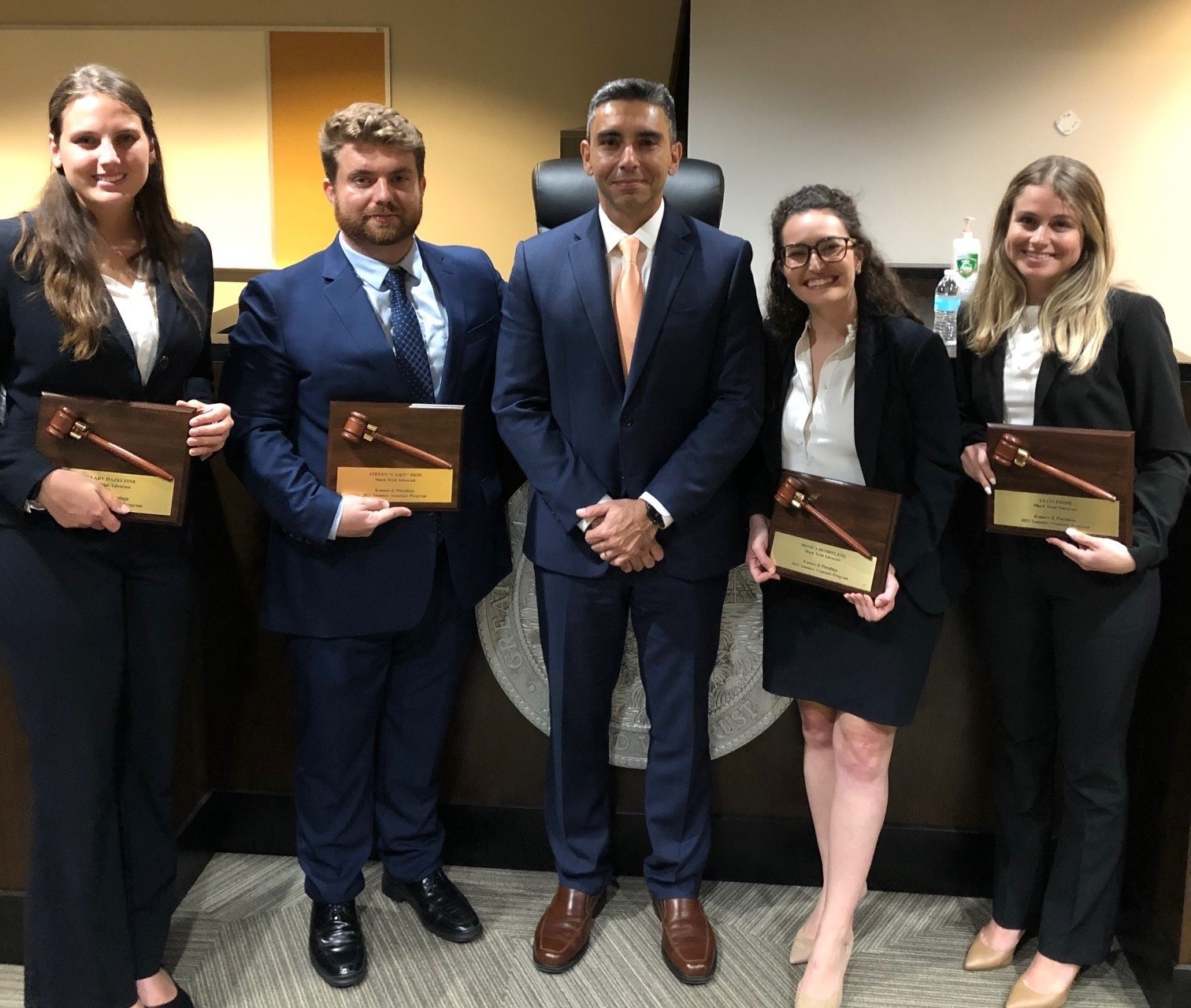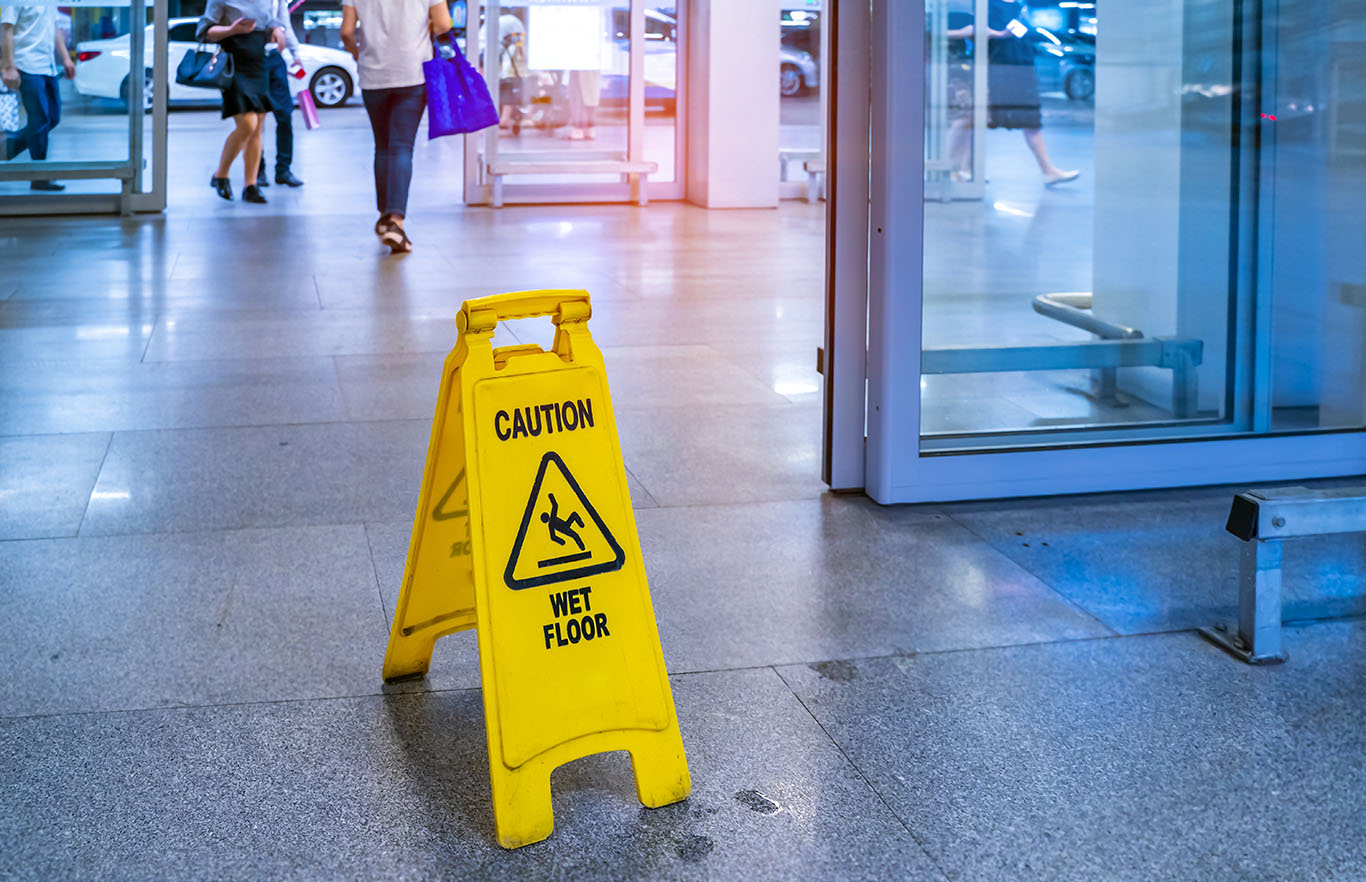- WE’RE HERE TO HELP 24/7
- 800.586.5555
What’s the Difference Between Slip and Fall and Premises Liability?

2021 Summer Associate Program Concludes with Mock Trial in State-of-the-Art Courtroom
August 9, 2021
What Is My Personal Injury Case Worth in Florida?
August 21, 2021What’s the Difference Between Slip and Fall and Premises Liability?

Slip and fall cases are premises liability cases, but not every premises liability case is technically a slip and fall case. Premises liability personal injury cases are brought against the property owners for injuries sustained due to hazards on their property. Premises liability claims can take a truly diverse array of forms, from faulty wiring causing electrocutions to illnesses caused by black mold to assaults that happen on a property.
The fundamental core of every personal injury case is the same. The defendant owed the plaintiff a duty of care. The defendant failed to uphold that duty and the plaintiff was injured as a result. The defendant should therefore be liable for the plaintiff’s medical costs, lost wages and pain and suffering.
In that respect premises liability claims aren’t entirely dissimilar from auto accident injury cases. As a driver you owe every other driver, pedestrian and bike rider around you on the road a duty of care. That generally means you need to follow the rules of the road and adhere to traffic laws. If you do otherwise and cause an injury, you might be liable for the injured person’s damages.
Property owners owe a duty of care to most people who visit their property. The only people to whom a property owner might not owe a duty of care are trespassers. However, there are some narrow circumstances in which even a trespasser might have a premises liability case for injuries they sustained due to hazards on a poorly maintained property.
Proving a Slip and Fall or Premises Liability Case
Although a root breach of duty is at the core of all types of personal injury cases, there are some important fundamental differences between premises liability and auto accident injury cases.
In order for your slip and fall claim to have a real shot you’ll need to be able to clearly prove a few important preliminary facts:
- The hazard existed on the property before you were injured – it wasn’t something you caused
- The property owner knew about the danger or should have known
- The hazard wasn’t corrected despite the property owner having adequate time to do so
- You weren’t warned about the hazard
You’ve likely seen more than one version of the cliched wet floor stock photo. They often show a stock photo actor mid pretend slip with a wet floor sign next to them.
The fundamental problem with the scenario implied by these photos is the wet floor sign. That stock photo actor would likely have trouble winning their case because there was a clearly visible wet floor sign. They continued to walk on the wet surface despite being warned, which would potentially be enough to shield the property owner from liability.
Another common difficulty in premises liability cases is proving the property owner or staff members responsible for upkeep on a property should have known or did know about a hazard before you fell or were injured.
Spills in grocery stores and convenience stores happen. One of the responsibilities of employees in stores is to clean up spills quickly to ensure injuries don’t happen. If a customer drops a jar of pickles and another customer slips in the brine, falls and suffers serious injuries, the store and property owner might or might not be liable.
The case may hinge on how long the spill was there and whether it would have been reasonable for staff members to know about it and get it cleaned up or get a wet floor sign up before the fall. If the slip happened only 30 seconds after the spill, the store might be able to argue that it would be unreasonable to expect staff to have seen the spill and taken action in time to prevent the slip and fall. If the puddle sat in the aisle for ten minutes and no one cleaned it or put up a wet floor sign, it may be more difficult for the store owner to use ignorance of the hazard as a defense.
To have a successful premises liability or slip and fall case it’s often necessary to reliably establish facts like:
- Timelines of when the hazard occurred and when the accident occurred
- The visibility of the hazard and whether a reasonable person should have seen the hazard and avoided it
- The established or expected responsibilities of property owners or property managers to address the hazard
That’s why personal injury attorneys frequently encourage clients to take pictures of the hazard that caused their injury, inform the property owner of the injury and see a doctor right away after a slip and fall. Collecting that evidence will make it more difficult for the defense to claim your injury occurred elsewhere or at some other time.
Speaking to a personal injury lawyer as soon as possible might also be beneficial. The sooner a slip and fall attorney can start collecting evidence, like security camera footage that shows the incident and corroborates your story, the better your chances.
